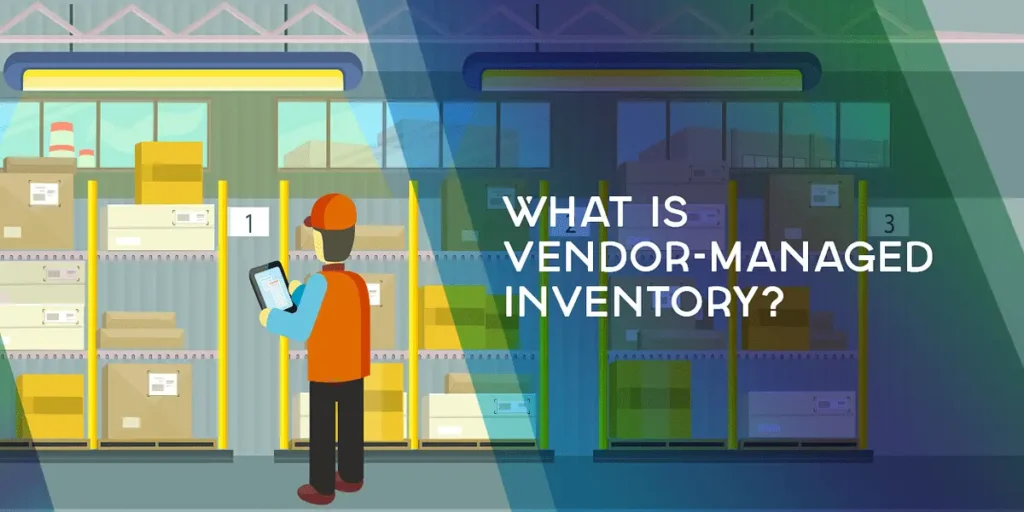Walmart continues to dominate both brick-and-mortar and online retail, making it one of the most powerful platforms for sellers aiming to scale their eCommerce business. But with this opportunity comes a critical challenge — managing inventory efficiently to meet Walmart’s strict performance standards and customer expectations.
Walmart inventory management plays a crucial role in determining your visibility on the platform, eligibility for the Buy Box, and overall seller score. Whether you’re a first-time seller or a seasoned vendor, mastering Walmart’s inventory systems can mean the difference between thriving sales and constant stock issues.
In this comprehensive guide, we’ll walk you through how Walmart’s inventory management system works in 2025, explain the Vendor Managed Inventory (VMI) approach, and show you how to leverage tools — including the Walmart inventory management app — to optimize your product availability and fulfillment speed.
If you’re serious about growing on Walmart, it starts with getting your inventory right. Let’s dive in.
What is Walmart Inventory Management?
Walmart inventory management refers to the process of tracking, controlling, and optimizing product stock levels across Walmart’s extensive retail and eCommerce network. For third-party sellers on Walmart Marketplace, it involves ensuring the right products are available, at the right time, in the right quantities — all while complying with Walmart’s performance metrics.
Unlike smaller platforms, Walmart has extremely high standards for inventory accuracy and availability. The company’s reputation for fast, reliable fulfillment and everyday low prices is underpinned by a powerful, tech-driven inventory system. If you’re a seller on Walmart.com, you’re expected to match that standard — and failure to do so can lead to reduced visibility, lost sales, or even account suspension.
Walmart uses a combination of real-time tracking, automated replenishment, and data-driven forecasting to maintain optimal product availability. For Marketplace sellers, integrating your inventory with Walmart’s systems is essential to avoid stockouts, overselling, and delayed shipping — all of which negatively impact your seller performance.
Inventory management at Walmart covers a variety of operational layers:
Monitoring in-stock status across multiple fulfillment points (your warehouse, Walmart Fulfillment Services, or third-party logistics)
Syncing stock levels with order activity in real time
Using tools like the Walmart inventory management app or third-party software to automate updates
Adhering to strict service-level agreements for order fulfillment and availability
Walmart’s algorithm rewards sellers who maintain high product availability by pushing their listings higher in search results and increasing chances to win the Buy Box. Conversely, poor inventory practices result in fewer impressions and lower conversion rates.
Understanding how Walmart’s inventory system works is the first step toward building a scalable, reliable selling operation on the platform.
If you’re just starting out with Walmart, check out our detailed guide to learn how to sell products to Walmart.
How Walmart's Inventory Management System Works?
Walmart’s inventory management system is a finely tuned, data-driven engine designed to support both its massive retail infrastructure and its rapidly growing eCommerce ecosystem. At its core, the Walmart inventory management system uses real-time data to track product movement, optimize availability, and streamline restocking across all channels — whether that’s a physical store, a warehouse, or an online fulfillment center.
Real-Time Inventory Tracking
Walmart’s system constantly updates inventory levels across its network using internal software, RFID technology, and supply chain integrations. For third-party sellers, this means your listings must accurately reflect current stock levels at all times. Any mismatch between available inventory and what’s shown online can result in canceled orders, delayed shipments, and penalties from Walmart.
Automated Replenishment Logic
Walmart leverages advanced forecasting algorithms to automate replenishment at scale. This means inventory is restocked based on:
Past purchase behavior
Seasonal trends
Local demand variations
Shelf-level data (in-store)
When your inventory falls below a threshold, Walmart’s system automatically flags it for restock — assuming you’ve enabled integration or are enrolled in Walmart Fulfillment Services (WFS).
SKU-Level Insights & Forecasting
Walmart sellers gain access to granular insights into SKU performance through tools like the Walmart Seller Center or third-party dashboards. By analyzing trends, sellers can better forecast demand and avoid understocking or overstocking — both of which can hurt margins and ranking.
Syncing with Third-Party Tools
Sellers who use platforms like Deliverr, ShipBob, or custom-built ERPs can sync their stock directly into Walmart’s backend. This ensures seamless updates and helps meet Walmart’s standards for product availability, which is a core factor in both algorithmic rankings and customer satisfaction.
Stockouts = Lost Opportunities
When your products go out of stock, Walmart will often de-list or demote the product temporarily. This is why consistent inventory syncing is essential to stay competitive. Managing your stock efficiently is not just an operational task — it’s a visibility strategy.
In summary, Walmart’s inventory system emphasizes accuracy, automation, and real-time responsiveness. Sellers who align with these principles are more likely to thrive on the platform.
Walmart Vendor Managed Inventory (VMI) Explained?
How VMI Works
In a typical supply chain, the retailer (Walmart) would track inventory levels and place purchase orders as needed. In a Vendor Managed Inventory model, Walmart allows its suppliers access to real-time data on sales and inventory. Suppliers then forecast demand, schedule replenishments, and ensure optimal stock levels — all without needing Walmart to initiate the process.
This collaboration leads to:
Reduced stockouts and overstocks
Faster replenishment cycles
Better in-store and online product availability
Stronger supplier-retailer partnerships
Why Walmart Uses VMI
Walmart adopted VMI as part of its broader goal to streamline operations, reduce excess inventory, and deliver better customer experiences. By shifting some inventory responsibility to suppliers, Walmart:
Minimizes manual order processing
Reduces operational costs
Improves shelf availability and fulfillment rates
For vendors, it offers access to real-time insights and more control over inventory planning — resulting in fewer missed sales opportunities and better alignment with consumer demand.
Who Can Use VMI?
VMI is typically reserved for first-party suppliers (1P) and high-volume vendors who meet specific criteria. It requires seamless data exchange, typically through Electronic Data Interchange (EDI) or integration via Walmart’s Retail Link system.
If you’re a Marketplace seller (3P), you won’t use VMI directly, but understanding how it influences Walmart’s broader inventory strategy helps explain why availability and accuracy are so critical to the platform’s success.
Why Use Walmart Inventory Management Software?
Managing inventory efficiently is one of the most critical aspects of succeeding as a seller on Walmart Marketplace. While it’s possible to manually track stock levels and manage orders, using Walmart inventory management software can dramatically improve accuracy, save time, and reduce costly errors.
Here’s why leveraging inventory management software is crucial for Walmart sellers:
Real-Time Inventory Updates
One of the biggest challenges of managing inventory on Walmart is ensuring that stock levels are up to date at all times. Manual updates are prone to errors and can cause mismatches between what’s available in your warehouse and what’s displayed on Walmart.com. With an inventory management system, your stock levels are updated in real time, ensuring consistency across all channels. This is especially important for avoiding overselling or stockouts, which can damage your seller performance.
Seamless Integration with Walmart’s Systems
Most top-tier Walmart inventory management systems integrate directly with Walmart’s backend, including tools like Walmart Seller Center and Walmart Fulfillment Services (WFS). This allows sellers to automatically sync inventory, reducing the risk of human error and eliminating the need for manual updates. Integration also provides better visibility into stock levels, enabling faster response times when inventory needs to be replenished.
Automated Order Fulfillment
When using software to manage your inventory, order fulfillment becomes much smoother. The system can automate restocking, generate purchase orders, and help you track shipments to Walmart’s fulfillment centers, all while ensuring the proper stock is in place for customers. This increases operational efficiency and reduces manual intervention — leading to faster, more accurate deliveries.
Forecasting and Demand Planning
Advanced Walmart inventory management software offers powerful forecasting tools that use historical data to predict demand for your products. By understanding purchasing patterns and seasonal trends, you can plan inventory ahead of time and avoid costly stockouts or overstocking. This proactive approach helps maintain a steady flow of sales without unnecessary inventory buildup.
Scalability and Automation
As your business grows on Walmart, so do your inventory needs. Software provides scalability, allowing you to automate processes that would otherwise take up valuable time. This makes it easier to manage a growing product catalog and multiple sales channels simultaneously, all while keeping stock levels optimized and up to date.
Different Types of Walmart Store Inventory and Their Functions
Finished Goods Inventory System
Finished goods inventory refers to products that are fully manufactured, ready for sale, and stocked in warehouses or retail locations. For Walmart sellers, these are the products that are already prepared and awaiting customer orders. Unlike raw materials or work-in-progress items, finished goods are complete and immediately available for distribution.
Walmart uses this type of inventory system to streamline order fulfillment and improve product availability. Sellers using Walmart Fulfillment Services (WFS) must ensure that their finished goods inventory is accurately recorded in Walmart’s system so that when customers place orders, there are no delays due to stockouts or incorrect information. Efficiently managing finished goods inventory ensures fast fulfillment and helps maintain high seller performance ratings.
Key Functions:
Maximizes sales potential by ensuring products are ready to ship.
Reduces fulfillment delays and optimizes the supply chain.
Helps maintain high product availability for customers.
Transit Inventory Management
Transit inventory refers to goods that are in transit from the supplier to a retail location or fulfillment center, but have not yet been received. This type of inventory is crucial in walmart inventory management because it affects stock levels, order fulfillment timelines, and forecasting accuracy. Transit inventory management ensures that Walmart has a clear understanding of when products will arrive so they can plan for replenishment.
Walmart’s system tracks these goods in real-time, often through GPS and RFID, to provide visibility on when shipments will arrive and to avoid delays in product availability. Proper transit inventory management helps prevent stockouts by ensuring that there is a seamless transition from “in-transit” to “in-stock” without significant downtime.
Key Functions:
Reduces the likelihood of stockouts by keeping track of incoming shipments.
Improves forecasting and replenishment planning.
Provides transparency into delivery schedules.
Buffer Inventory
Buffer inventory, also known as safety stock, refers to extra inventory kept in reserve to protect against uncertainties in supply chain operations, such as delays in shipment or unexpected spikes in customer demand. Walmart sellers often maintain buffer inventory to ensure that even during periods of high demand or supply disruptions, there will still be enough stock available for customers.
Buffer inventory helps maintain walmart product availability, reduces the risk of stockouts, and allows sellers to fulfill orders even when unexpected fluctuations occur. For example, during peak shopping seasons like Black Friday or the holiday rush, sellers might increase their buffer inventory to manage the surge in orders.
Key Functions:
Protects against stockouts during times of high demand or supply chain disruptions.
Provides a cushion to prevent missed sales opportunities.
Helps maintain service levels without over-relying on supply chain predictions.
Anticipation Inventory
Anticipation inventory is inventory that is built up in anticipation of future demand. This type of inventory is particularly important for managing seasonal or promotional items that have predictable sales surges. For example, a Walmart seller might anticipate higher demand for winter clothing during the colder months and increase inventory levels ahead of time to ensure availability.
Walmart encourages sellers to maintain anticipation inventory for products that will experience predictable demand spikes, like toys during the holiday season or garden supplies during the spring. Properly managing anticipation inventory ensures that you’re prepared to meet demand when it occurs, while also avoiding stockouts that could lead to lost sales.
Key Functions:
Helps meet demand spikes during peak seasons or special events.
Allows sellers to prepare in advance for high-demand products.
Reduces the likelihood of lost sales by ensuring availability during key times.
A Seller’s Guide to Walmart’s Private Label Trends in 2025
How to Manage Inventory Across Walmart’s Supply Chain
Walmart has perfected a series of innovative strategies that allow it to manage inventory effectively across its vast and complex supply chain. The company ensures high efficiency, rapid product turnover, and minimal waste, all of which are crucial in meeting the demands of its massive customer base. Here are some of the most important methods Walmart uses:
ABC Inventory Analysis
Walmart employs a sophisticated ABC analysis to categorize its inventory, ensuring that the most critical products are given priority. This system divides inventory into three categories based on the importance and value of the items:
Category A: These are high-priority products such as finished goods and essential operational equipment. Walmart monitors these items closely, ensuring stock levels are carefully managed to avoid stockouts.
Category B: Items in this category are still important but may not require the same level of attention. These can include materials for store operations or products that are not as frequently sold. Stock levels are monitored regularly but with less intensity than Category A.
Category C: This category typically consists of lower-value or less critical items like office supplies. These products are tracked with less frequency, ensuring that resources are allocated efficiently.
By focusing on the importance of each item, Walmart can prioritize its inventory management efforts, ensuring the most critical items are always available when needed.
Integrated Inventory Information Systems
At the heart of Walmart’s efficient inventory management is its integrated inventory information system, which connects its retail and eCommerce operations globally. These systems enable real-time visibility into stock levels, sales trends, and replenishment needs, allowing for seamless coordination between Walmart’s stores, distribution centers, and suppliers.
This interconnected system supports Walmart’s vendor-managed inventory (VMI) model. Suppliers have direct access to their product data and can actively manage their inventory in Walmart’s stores and warehouses. This collaboration between Walmart and its suppliers ensures better stock control, fewer stockouts, and quicker restocking, making the process more efficient.
Managing the Bullwhip Effect
The bullwhip effect is a common issue in supply chains, where small fluctuations in demand can lead to larger inefficiencies further down the line. Walmart combats this challenge by using its vendor-managed inventory system, which allows suppliers to access real-time data on product demand and inventory levels. This direct access to information reduces the chances of human error and ensures that the flow of goods remains steady throughout the supply chain.
By reducing the reliance on Walmart’s internal personnel for ordering, suppliers can adjust their inventory levels based on actual sales data, rather than estimates. This minimizes excess stock and prevents stockouts, making the entire supply chain more responsive and efficient.
Benefits of Walmart Inventory Management System
1. Centralized Data Aggregation
For sellers using Walmart’s marketplace, the ability to manage inventory seamlessly across different channels is invaluable. Integrating your inventory data into a single dashboard simplifies operations, saving time and reducing complexity. This system consolidates information from Walmart, eCommerce stores like Shopify, and other marketplaces into one place, giving you a clear overview without juggling multiple logins. This centralized approach optimizes operations and helps avoid stock discrepancies that can arise from managing inventory across various platforms.
2. Robust SKU Management
A well-organized SKU (Stock Keeping Unit) system is a game-changer for businesses managing large inventories. Walmart’s inventory management allows sellers to create unique SKUs for each product, attaching essential information such as size, color, and manufacturing details. This streamlined process makes inventory tracking and replenishment easier, ensuring that each product is easily identifiable and correctly categorized.
3. Detailed Reporting for Smarter Decisions
With Walmart’s reporting tools, sellers can access comprehensive data such as sales forecasts, optimal reorder quantities, and inventory turnover rates. Walmart’s Replenishment Report helps sellers stay ahead of demand, reducing the chances of stockouts or excess inventory. These insights allow for smarter decision-making and a proactive approach to inventory management.
FAQ's
What is Walmart Inventory Management?
Walmart Inventory Management refers to the system and processes Walmart uses to track, manage, and optimize the stock of products across its vast retail network. It includes real-time data tracking, demand forecasting, and integration with suppliers to ensure products are always available while minimizing overstock or stockouts.
How does Walmart’s Vendor Managed Inventory (VMI) work?
Walmart’s VMI allows suppliers to manage their products’ stock levels in Walmart’s stores and distribution centers. Suppliers have direct access to inventory data, enabling them to replenish stock as needed, reducing reliance on Walmart’s internal team and enhancing supply chain efficiency.
What are the key benefits of using Walmart's inventory management system?
Walmart’s inventory management system helps optimize product availability, streamline replenishment, and reduce operational costs. It improves decision-making through data-driven insights, supports collaboration with suppliers, and helps businesses manage stock levels across multiple sales channels.
What challenges should sellers expect with Walmart's inventory management system?
Sellers may face challenges like the learning curve when adapting to Walmart’s platform, technical integration with existing software, scalability concerns, and ensuring data security. Overcoming these hurdles often requires training, IT support, and robust security measures.
How can I integrate my existing inventory software with Walmart’s system?
Integrating your existing inventory software with Walmart’s system requires aligning with Walmart’s technical specifications. This may involve syncing data across both platforms, ensuring compatibility, and, in some cases, investing in IT resources for a smooth integration process.
Conclusion
In conclusion, Walmart’s inventory management system is a powerful tool for sellers looking to streamline operations and enhance product availability. By utilizing real-time data, integrated systems, and vendor-managed inventory (VMI), Walmart helps sellers reduce stockouts, optimize stock levels, and boost efficiency across their supply chain.
While challenges like system integration, scalability, and data security exist, the benefits of improved inventory control, faster replenishment, and cost reduction outweigh these obstacles.
Mastering Walmart’s inventory management system enables businesses to make smarter decisions, manage multiple sales channels effectively, and keep customers satisfied with timely deliveries. For sellers looking to thrive in Walmart’s marketplace, embracing these tools is essential for long-term success and growth.
Contact Us for Tailored Solutions – Stores Automation:
Ready to transform your Walmart store and achieve big wins? Contact us at Stores Automation for personalized solutions that leverage the power of automation for your business. Reach out to us at 302-204-8244 or via email at info@storesautomation.com. Sign up and Embark on the path to e-commerce success with Stores Automation – where small changes lead to big wins!








